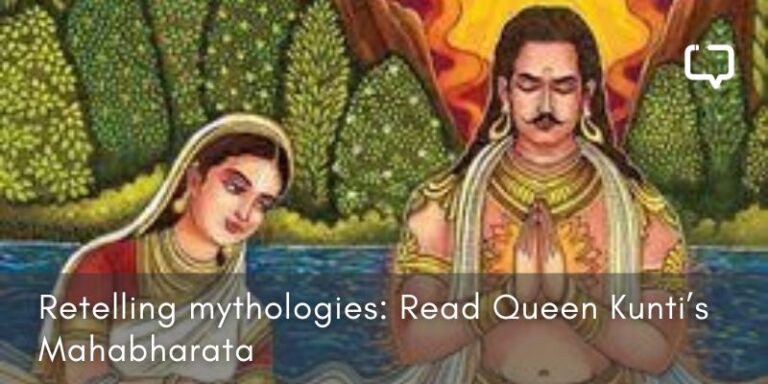We encourage you to buy books from a local bookstore. If that is not possible, please use the links on the page and support us. Thank you.
C.P. Surendran’s One love and the many lives of Osip B is a work of dystopian fiction that captures the chaos of individual memory and a nation’s change. The novel is dedicated to ‘the victims and their victims’ by establishing a connection between the past and present and ruling out any general notions of right and wrong.
Osip and his nomenclature
“Often one’s name is one’s fate. One had to respond to the particular challenge that it enjoined upon oneself.”
Osip B stands for Osip Bala Krishnan, christened by his adoptive grandfather after Osip Mandelstam, the Russian poet whom Joseph Stalin banished to Siberia and whose works were banned for another two decades in the Soviet Union. What is impossible to ignore is that both Mandelstam and Stalin share the same first name. (Joseph as Iosip or Osip). Both Stalin and Mandelstam make regular appearances in One Love and the many lives of Osip B as Osip and his grandfather share folie a famille, a nongenetic delusional family disorder, which causes them to hallucinate. This marks the erstwhile Soviet Union’s shadow in the story. Stalin and Soviet history are metaphors for power.
An 18-year-old Osip falls in love with his English teacher Ms Elizabeth Hill at a boarding school in Kasauli. Ms Hill, of British descent, gets pregnant as a result of their affair and leaves for England in shame. Osip, possessed by his obsessive love for her, kidnaps the school priest’s corpse to extort money for his trip with the help of his friend Anand. The first part of the title and the book’s blurb might sound like transgressive love, but the second part is about the effect of that love that triggers all other lives.
Osip, as a narrator, is unreliable owing to his medical condition. We are taken along with him in the journey of his mind, which is wild and maniac spanning across time and places.
A motley of characters and their reflections on society
Osip’s friend, Anand lives under the courtesy of his stepmother and the principal of their school, Ms Yolanda Andrade whom he hates. In the events resulting from the kidnapping, Osip and Anand part ways. Anand goes on to become a famous godman with an army of followers. Through Anand’s story, the author offers a glimpse into India’s religious and spiritual market.
Idris, a petty thief, whose father was lynched to death on charges of beef trade, goes on to change his religion and identity in order to make ends meet.
Osip’s grandmother Gloria Innaley is an interesting woman. ‘Innaley’ literally means ‘yesterday’ in Malayalam. She is exhausted to live under the shadow of her communist, revolutionary husband with a murderous past and waits for his death to actually start living her life.
Arjun Bedi, Osip’s mentor-writer-friend, a disgraced journalist caught under sexual harassment allegations. His character seems out of place and did not fit into the novel. Through Arjun, the author delivers his own views on various topics in a sensational way, reflecting journalism in India, today.
Never articulate your adolescent theories outside these walls. They will lynch you. The Right will lynch you. The Left, too. They will find some other reason. You and I are the type who will get lynched by one group or the other. The cow vigilantes as well as the cow eaters.
Structure, Style and Plot Points
One love and the many lives of Osip B follows a non-linear narrative mirroring the complexities of life with a lyrical power of its language that is poetic yet casual. It covers various topics – from Holocaust to Tibetan refugees, communism to nationalism, individual freedom to power, journalism and fake news. From a critical perspective, it has all elements of literary fiction infused with satire, raw humour, metaphor and philosophy.
The author has taken the liberty of the atypical mind of our protagonist to play with time in the book. It is often not clear when something occurred or whether it did happen at all. Also, there are convenient plot twists with characters and their chance encounters like the one that occurs in an illogical commercial cinema. Osip’s unlikely friendship with Arjun, a famed journalist who is much older than Osip, a pretentious Uber driver from an initial scene resurfaces in the climax to represent right-wing torments and the boys’ attempt to exhume the priest’s body and the way in which they get out of it are some cases in point. After all, this could all have just taken place inside Osip’s head. But how much of this is actually the inner workings of Osip’s brain is left to the reader’s discretion. It is this discretion that marks the novel’s merit to a reader.
One love and the many lives of Osip B is not an easy read given the fact that the author has touched upon anything and everything under the sun, making it strong and weak at the same time. But for a thorough reader, this is a challenging read with a reward guaranteed.




















